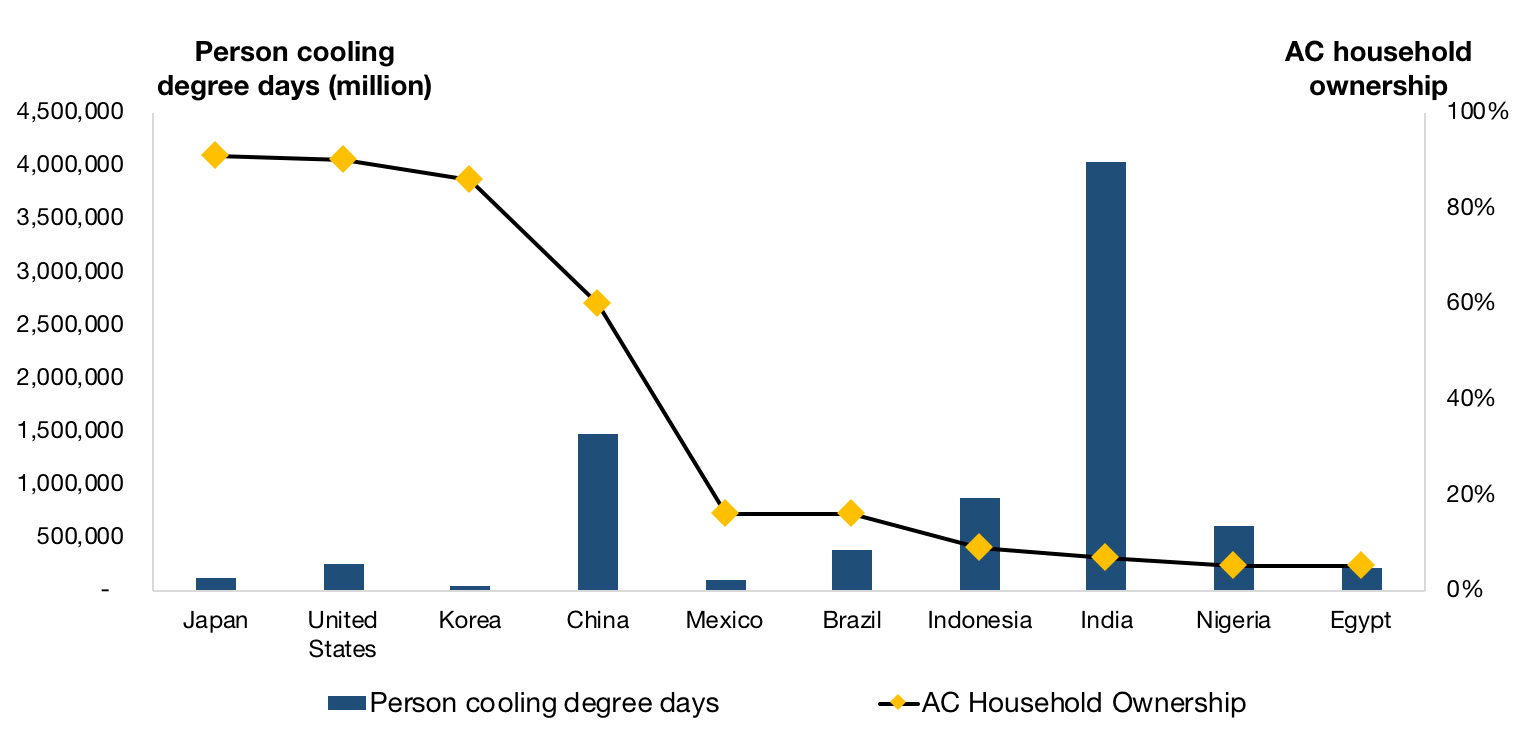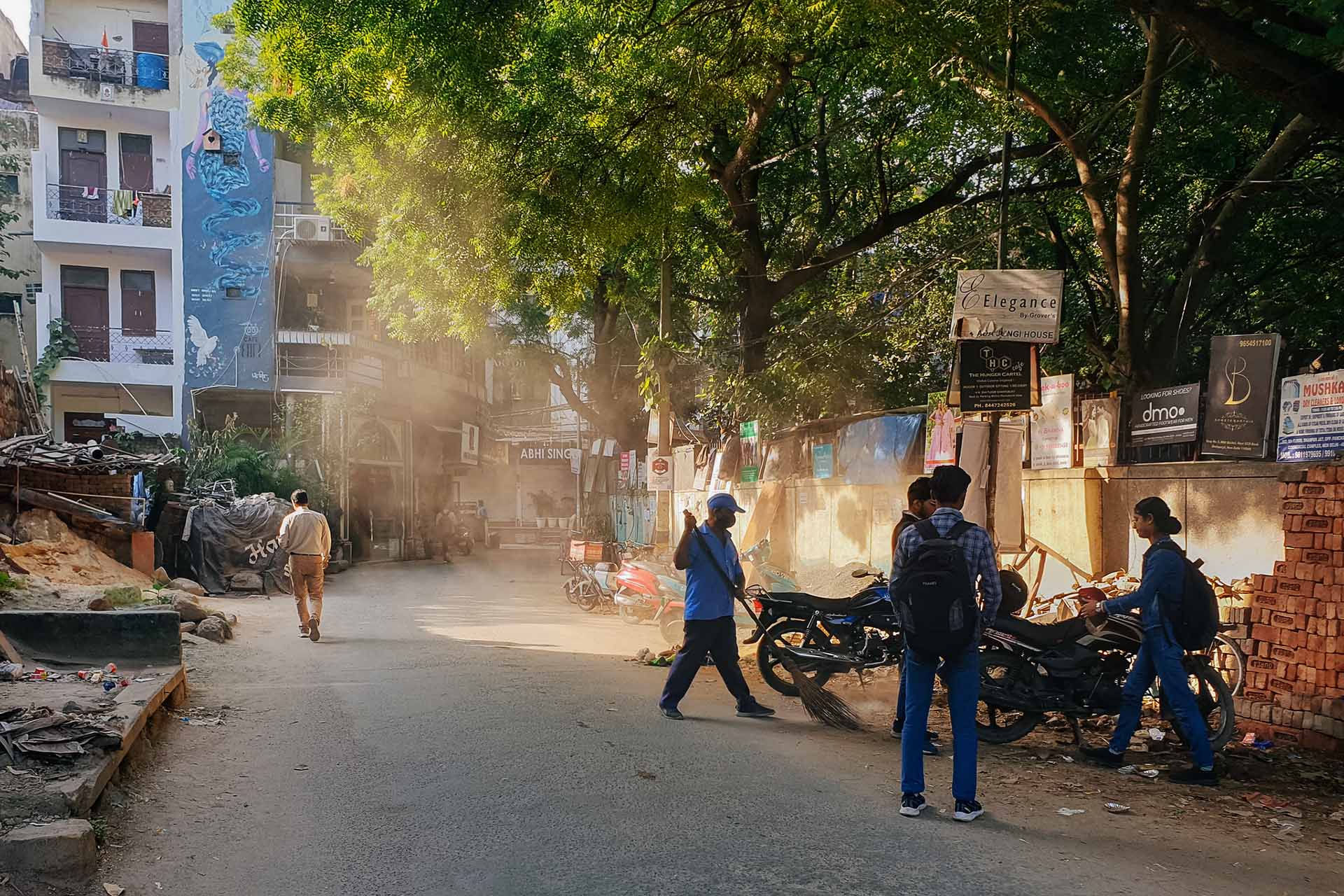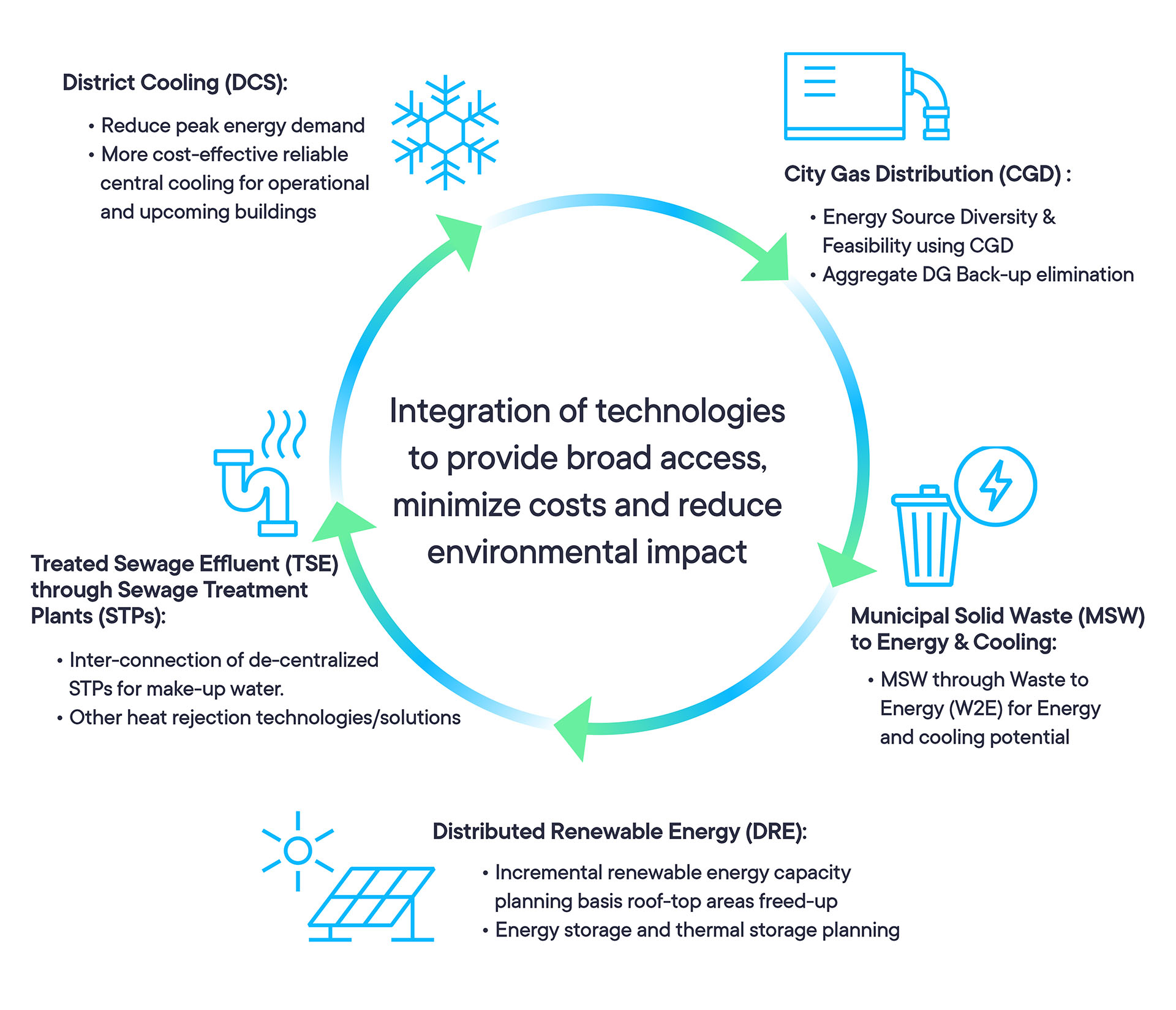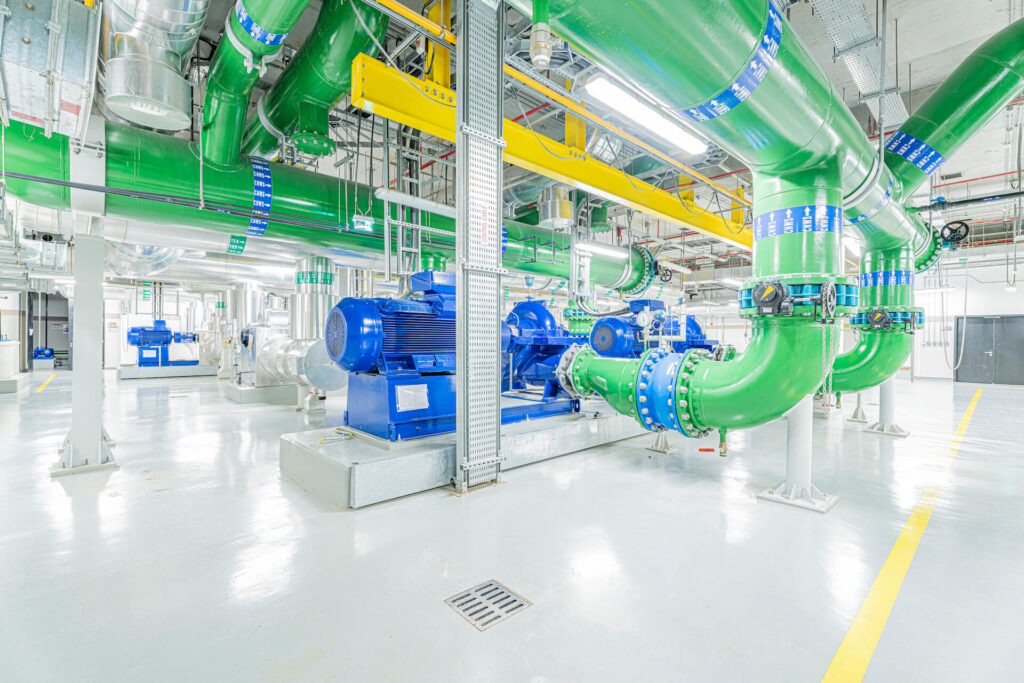It’s All About Cooling in India
An exclusive interview with Sudheer Perla from Tabreed India on the sidelines of Energise India 2023 in Goa on 1 November 2023 for a deep dive into the cooling industry in India.
India’s Cooling Action Plan (ICAP) anticipates a tenfold growth in the cooling sector within the next decade. The escalating demand, expected to increase over the next thirty years, is driven by space cooling, data center cooling, industrial cooling, and cooling for coal chains. Formerly considered a luxury, cooling in India is now a necessity due to climate crises and rising temperatures – and there is also a significant growth opportunity.
However, a crucial shift toward circular and integrated approaches, including district energy and cooling systems, is needed for sustainable growth. In this interview, Stuart Reigeluth, from REVOLVE, talks to Sudheer Perla, Director of Tabreed Asia and Country Manager of Tabreed India, about challenges, perspectives, and innovation in the cooling sector.
India’s Cooling Action Plan (ICAP) gives an estimate of 10x growth of the cooling sector over the next decade. Due in part to rising global temperatures, can you provide an overview of the demand for cooling across the sub-continent?
Cooling demand is expected to grow by level 11X over the next thirty-odd years, under the India Cooling Action Plan (ICAP) announced in 2019. The demand comes from four key sectors:
- space cooling, which is basically for buildings
- cooling for data centers, because of data localization policies, which every country has, as well as the amount of data growth, which is a huge driver
- cooling for industrial purposes, that always has been a large sector, and that is also growing more now with India having much larger aspirations to shift factories, competing with China
- coal chains, which is a much neglected sector
These are the four broad sectors that contribute to India’s cooling demand. The largest of these is space cooling.
Historically in India, because of the way cooling was done – and there was less urbanization – the demand has been low. However, with increasing climate crisis events, with increasing extreme heat that is becoming more and more common in many parts of India: Cooling was perceived as a luxury in the past, but now it is becoming much more of a necessity. It is quite clear now that no matter in which city you are, some form of thermal comfort is essential due to increasing heat-related deaths around India.
Cooling was perceived as a luxury in the past, but now it is becoming more and more of a necessity.
People used fans for ventilation, but the combination of rapid unchecked urbanization with more disposable income plus increasing GDP per capita are contributing to people shifting towards air conditioners. Within the context of climate change, urbanization, and purchasing power are absolutely contributing to the rapidly growing demand for cooling in India.
To put numbers in perspective, India had an air conditioning penetration rate of less than 9% in 2023. China was less than 5% in 1990 and went to 85% in 2005: 15 years of absolutely explosive growth. In most parts of Europe and the West, it is close to 95% of thermal comfort, heating, or cooling. In India, it is at 5% penetration, so combine that with the population of 1.3 billion and multiply times 3,000 cooling degree days per year, we are looking at a total of 3 trillion cooling degree days, which is a substantially high number. If India were to go in the direction of 5% cooling penetration to 90% penetration, it would be a disaster for the planet.

Cooling in India has been largely based on individual air-conditioning units, so the district cooling sector is essentially a ‘blue ocean’ for business expansion. What is Tabreed India’s approach to providing integrated cooling solutions?
Given the exponential growth expected in cooling demand now, approaching things in a siloed way (as has been done traditionally) is not going to work. There needs to be a shift to a lot more circular, integrated approaches of urban planning while considering thermal comfort as a fundamental need for all. For that to happen, India needs more and more district energy systems along with district cooling systems. What that means is that rather than looking at linear power systems, waste systems, and water systems, what district cooling can do is essentially act as a catalyst. When you know that large parts of energy demand in buildings go towards cooling, rather than each building doing it individually, if you can centralize that plan with better technologies and do it more efficiently, and then combine aspects of using water and energy better, it would be cost-effective, more sustainable, and better planned.
There needs to be a shift to a lot more circular, integrated approaches of urban planning while considering thermal comfort as a fundamental need for all.
What Tabreed can bring to the table is that, between Tabreed and its shareholder Engie, we are the largest district energy company in the world. We are present in 25 countries, doing either district cooling, district heating, or district heating and cooling. And, since as a developer, we are technology-agnostic, we look at each project’s requirements and local conditions, to basically propose fit-for-purpose solutions, as far as possible, integrating aspects of energy use, water use, potential waste use, waste heat sources, to use that towards a district cooling system. We essentially design, build, finance, own, and operate systems. We bring in the technology, we bring in the money, and the expertise to ensure that this vision for an integrated approach can be put into practice on a very large scale.

What circular systemic solutions are out there for cooling? What innovative solutions does Tabreed India offer for ‘resource circularity’ and waste heat from district cooling?
What is interesting about a place like India is that in some sense it is a country of engineers, so you have one end of the spectrum, for example, the head of the snake where there is amazing innovation happening, far more than what you would probably see in the West. You have companies who really push boundaries in terms of trying to make sure that they can incorporate a whole lot of extremely passive elements to minimize the amount of cooling required and follow more integrated approaches towards making sure they are able to meet their water, electricity, and cooling needs in a more sustainable way. But then, you have a really long tail, where there is a lot of need for improvement, for example in terms of circularity and resource circularity and waste heat recuperation from district cooling.
The solution – the need of the day – is basically combining aspects around far more efficient building design, in the context of space cooling, to reduce the amount of cooling required, then making sure that whatever residual load is there, we are going to need some amount of thermal comfort required, potentially planning it centrally. The reason why you plan centrally is due in part to the large amount of renewable energy in India, adopted for rooftop solar for example. For rooftop solar, you need to have rooftop space. So, an aspect of circularity that district cooling lends itself quite well to is enabling each building to have more rooftop space, to put more solar PV panels, and to make sure buildings’ energy requirements can be met individually, that is number one.
Number two: India is water scarce and generally if you use water as a medium for cooling it is more efficient compared to air. Sewage is also a big problem in India; a large part of which is not treated and goes into rivers, lakes, and oceans. A great use for that is through treating it centrally within a community or a set of buildings to use in a cooling system and that way you are solving two problems: treating sewage without letting it go into water bodies while providing an essential need for cooling. That is the second aspect of circularity.

Third is waste which has many forms, such as municipal solid waste. While India’s per capita waste generation is low, the use of that waste is also low compared to the West, broadly speaking. Because cooling and thermal comfort can be powered through any form of energy source, you can actually use waste-to-energy systems and cooling systems to prevent landfills from being filled up and solve part of the social problem of landfills, waste, and health hazards, while coupling with meeting cooling demand. Any kind of waste heat that might arise, within an urban construct, whether from data centers, or heaters, you can look at ways to capture them to convert them into energy sources.
Finally, what a district energy approach also does is help mitigate urban heat islands, which do not go into planning as they should. Urban heat islands come about in two or three ways: (1) transportation is a big one that the transportation and mobility sector is looking to become more sustainable in; but it is (2) the built environments with air conditioners that are the biggest causes. When you have integrated systems, including district cooling, you move away from heat rejections from individual buildings to a central plant and then manage them in a central plant through more innovative ways to mitigate urban heat islands effectively. All of this comes together to enhance the quality of life and the system’s circularity.
Do you use industrial-size heat pumps, within your district cooling planning? Is that part of the technology, the energy efficiency side of things that you are integrating?
Not as much as we could, that is still an evolving area. In applications, where we need to provide heating and cooling, that is a great place, where I think by default, we could put heat pumps and industrial-grade heat pumps to provide thermal comfort and heating, but not only for cooling at this point.
What’s the difference between district cooling and Cooling-as-a-Service (CaaS)?
Cooling as a service (CaaS) is basically at a building level. Instead of building owners or developers putting their own HVAC systems, we tell them we can design that for you better, we can procure better, finance it, own and operate it, and convert what is a CAPEX-heavy model into an OPEX model, where you just pay for what you consume, you just pay as you go. It is the smallest scale of district cooling.

District Cooling, on the other hand, is not just about working at a campus or building level but looking at something larger. Where you can look at a community, and instead of cooling a building individually, you look at a central plant and then do the same thing, transport chilled water through piping networks to then deliver thermal energy to each building depending on the requirements.
So district cooling is essentially CaaS on a large scale, and then you have all the individual buildings within the network.
That is it. That is where the market is in India: at the individual building level because everybody is anyway meeting cooling one way or the other; we do not have the ability to plan a district cooling system yet, apart from some pockets. We have jumped the curve of going from individual units to larger district cooling in other markets, but in India, we are scaling down to Cooling as a Service to meet the market where it is at and hopefully move the market to district cooling as a result.

Tell us more about what is coming on the horizon with the Innovators for Cooler Earth?
There are four pillars to what we are advancing with the Innovators for Cooler Earth (ICE):
- On the technological side of things (where a lot of focus has always been) we want to encourage a more rapid adoption of innovative technologies in the market. To ensure that buildings are more energy efficient and by extension less carbon-intensive and more sustainable. Tabreed India can act as a matchmaker, since we have extensive experience in the cooling space, we can help map out innovations happening in technologies across the world, from start-ups to larger corporates across key thematic areas, and then see where the market needs are moving, to follow a matchmaking process for corporates, including financing mechanisms. It is like an extended R&D, innovation arm, for a corporation done completely free to accelerate the adoption of innovative technologies. That is one pillar at a micro level.
We want ICE to be a catalyst to foster more cooling as a service-type model where you can actually start having more people adopt CaaS
- Taking it one level up, where we see the challenge, is that while you have all these awesome technologies globally and a lot of capital floating on the global market, market conversion is still a big issue in emerging markets including India. The reason why market transmission is missing is due to a lack of business model innovation rather than a lack of technologies. So, we want ICE to be a catalyst to foster more cooling as a service-type model where you can actually start having more people adopt CaaS, either through Tabreed or other players. Taking it one level higher.
- The third pillar now, while you can do things individually, to really bring about en masse change in the built environment towards a more sustainable infrastructure, district cooling is key. Through the district cooling system, you can further accelerate the ability for buildings to decarbonize.
- The place where ICE would find it challenging is, again, the vision to essentially start looking at ways and means to incite interest and catalyze the market towards integrated urban resource use and energy systems. What ICE aspires to do is to show what is possible through specific case studies, and toolkits be it workshops or awareness sessions to help people make this market a reality. Also, trying to bring together different companies on each part of the spectrum that are currently thinking in a linear and siloed way to come together and start delivering circular solutions for cities in India.
